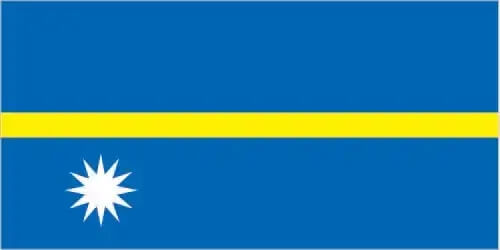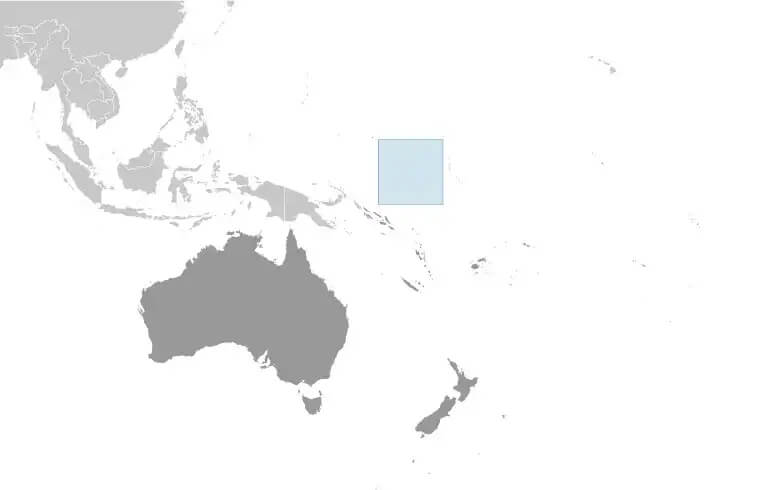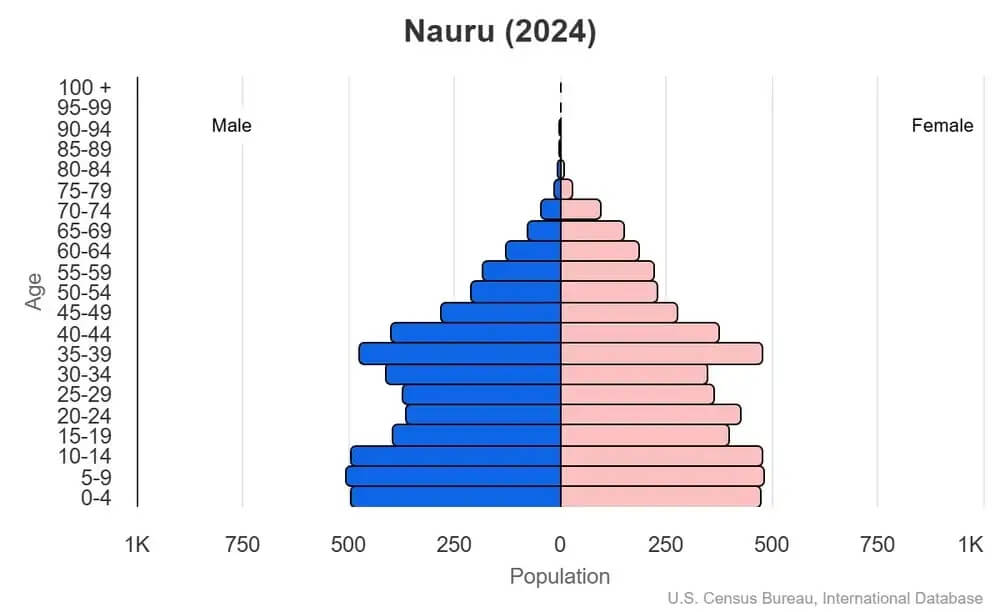World Book
Nauru
Introduction
Background
Micronesian and Polynesian settlers inhabited Nauru by 1000 B.C. In 1798, the British spotted the island, and Germany annexed it in 1888. Australia captured Nauru from Germany during World War I, and in 1919, it became a joint Australian-British-New Zealand mandate with Australian administration. Nauru opted for independence in 1968.
Geography
Area
total : 21 sq km
land: 21 sq km
water: 0 sq km
Climate
tropical with a monsoonal pattern; rainy season (November to February)
Natural resources
phosphates, fish
People and Society
Population
total: 9,892 (2024 est.)
Ethnic groups
Nauruan 94.6%, I-Kiribati 2.2%, Fijian 1.3%, other 1.9% (2021 est.)
Languages
Nauruan 93% (official, a distinct Pacific Island language), English 2% (widely understood, spoken, and used for most government and commercial purposes), other 5% (includes Gilbertese 2% and Chinese 2%) (2011 est.)
Religions
Protestant 60.4% (Nauruan Congregational 34.7%, Assemblies of God 11.6%, Pacific Light House 6.3%, Nauru Independent 3.6%, Baptist 1.5, Seventh Day Adventist 1.3%, other Protestant 1.4%), Roman Catholic 33.9%, other 4.2%, none 1.3%, no answer 0.3% (2021 est.)
Population growth rate
0.39% (2024 est.)
Government
Government type
parliamentary republic
Capital
name: no official capital; government offices in the Yaren District
Executive branch
chief of state: President David ADEANG (since 30 October 2023)
head of government: President David ADEANG (since 30 October 2023)
Diplomatic representation in the US
chief of mission: Ambassador Lara Erab DANIEL (since 13 January 2025); note - also Permanent Representative to the UN
Economy
Economic overview
upper-middle-income Pacific island country; phosphate resource exhaustion made island interior uninhabitable; licenses fishing rights; houses Australia’s Regional Processing Centre; former tax haven; largely dependent on foreign subsidies
Real GDP (purchasing power parity)
$150.581 million (2024 est.)
$147.976 million (2023 est.)
$147.026 million (2022 est.)
Real GDP per capita
$12,600 (2024 est.)
$12,500 (2023 est.)
$12,500 (2022 est.)
Exports
$64.931 million (2023 est.)
$78.383 million (2022 est.)
$54.403 million (2021 est.)
Exports - partners
Thailand 78%, Philippines 11%, NZ 5%, Japan 1%, Canada 1% (2023)
Exports - commodities
fish, phosphates (2023)
Imports
$150.193 million (2023 est.)
$165.371 million (2022 est.)
$141.185 million (2021 est.)
Imports - partners
Australia 50%, Japan 11%, Fiji 9%, Senegal 9%, China 9% (2023)
Imports - commodities
ships, titanium ore, refined petroleum, plastic products, other foods (2023)
Human Development Index
The country's Human Development Index (HDI) is 0.703, ranking it 124th out of 193 countries tested. (more information)



